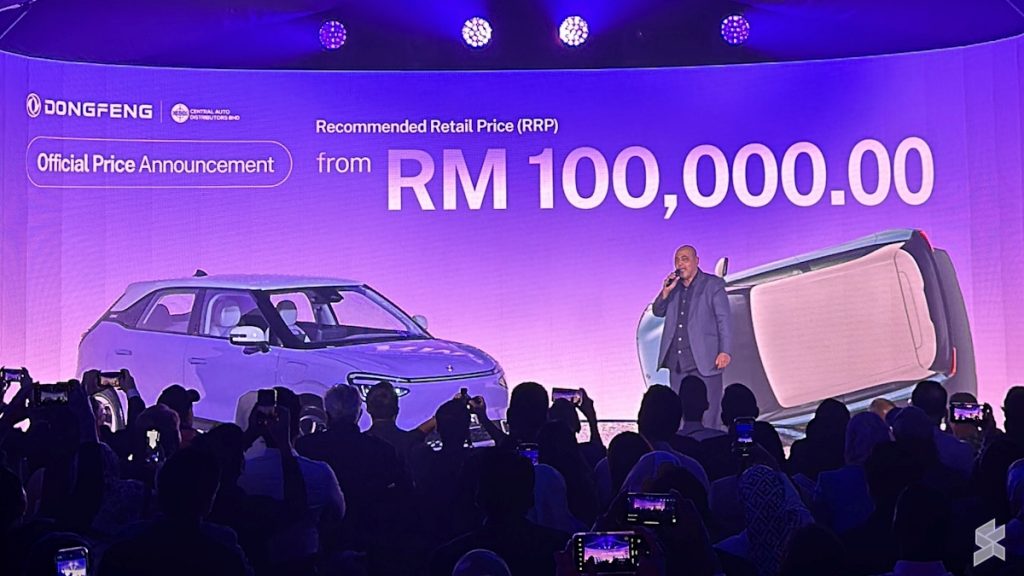In June, Chargeasap launched the Zeus 280W USB-C GaN Charger as a minor upgrade over its 270W GaN (gallium nitride) charger. It is the world’s first and smallest 280W charger yet. The upgraded power brick features four output ports — three USB-C and one USB-A — and a built-in OLED display that shows real-time charging speeds for each port separately. You get up to 140W of charging from one port. The firm supplies the charger with four different plugs (with interchangeable converters), ensuring a perfect fit in the wall socket everywhere. In this review, we look deeper into the Chargeasap 280W Charger’s everyday performance, portability, build quality, and other features.

Table of contents
Chargeasap 280W Charger Review: Hardware & Design
Chargeasap’s Zeus 280W USB-C GaN Charger is a massive power brick. It has a dimension of 89 x 59 x 44mm/3.5 x 2.32 x 1.73 inches and weighs 380 grams/0.83 pounds. While it feels relatively compact for what it offers, its weight doesn’t go unnoticed. It’s the first thing you’ll notice after taking the charger out of its box. The power brick is a bit too heavy to carry around in your handbag or backpack. Well, it’s certainly a better option than carrying multiple chargers. But if you travel frequently, this is something you’d want to be wary about.
Overall, this Chargeasap 280W charger has a well-built design with a smooth finish that feels premium. There is a “Chargeasap” logo on the left and right faces, while the front face has a display on the top with four output ports below it. The tiny rectangular display is a colored OLED panel that separately shows the real-time charging volts, amps, and wattage for each port. The ports are labeled C1, C2, C3, and A1, both on the display and the charger. The former three are USB-C ports while the latter is the lone USB-A port.
The USB-A port sits on the top left and has a maximum output power of 65W. The C1 port is next to it and offers up to 140W of charging speed, enough to charge your powerful new Windows laptop or Macbook. The C2 port sits directly below it and has the same output power. Finally, the C3 port is on the bottom left with a maximum charging speed of 100W. The ports are spaced well enough for easy connecting and disconnecting of charging cables. You can simultaneously plug in four cables without making the setup look overcrowded.
Some of the plug converters are built a little poorly
On the opposite face, the Chargeasap Zeus 280W USB-C GaN Charger has a convertible plug to draw power from the wall socket. The charger ships with the US version installed permanently, with additional plugs supplied in the box to convert it into the plug type used in your region. You get three interchangeable prongs, which should be enough to make the charger universal. The built-in prong folds into the charger’s body when connecting a converter, helping keep a compact shape. You can also fold it when carrying the charger in your bag.


While it’s a well-thought-out design from Chargeasap, pulling out the prong requires that extra bit of force and effort. You have to pull it out with your nails. If your nails are short and tidy, the prong might hurt your fingertip. If only the firm added a button or something to pull the prong out of its folded state. I also found some of the plug converters poor in build quality. If you are plugging the charger into a wall socket horizontally, the plug cannot hold it straight because of its sheer weight. I had the charger fall off the socket a couple of times. This might also damage the plug or the socket over time.
I would have also liked Chargeasap to provide users with instructions on connecting and disconnecting the plug converters. While it’s not rocket science—most users should figure it out pretty quickly—it should have printed the instructions on the box or the paperwork supplied inside the box. Maybe also add arrows showing the direction you should pull the converter when disconnecting it. Some people might end up pulling it in the wrong direction and potentially damaging the prong. These little things help enhance the user experience.
No USB cable in the box
This 280W charger from Chargeasap is designed carefully to not obstruct switches and sockets around it. Some multi-port chargers block things around them, negating their benefit of charging multiple devices simultaneously. Chargeasap deserves praise for taking care of that. However, the firm should have supplied at least one USB-C to USB-C cable in the box. The brick comes with no cable. You have to purchase them separately. Alongside the charger and plug converters, the box includes a pouch and some paperwork. Nothing more.
The pouch in question is nothing special. It’s a basic pouch with a drawstring to keep your charger, cables (that you purchased separately), plug converters (you should carry them when traveling abroad), and other accessories tucked away from your other belongings. A thoughtful addition from Chargeasap, but buyers would be happier to see a cable than a pouch. Maybe the firm thought device makers already supply a cable in the box, so we don’t need to include one. It’s no excuse, though. If I am buying a charger, I want a cable with it.
Chargeasap 280W Charger Review: Performance
The Chargeasap Zeus 280W USB-C GaN Charger delivers a maximum output power of 280W. As mentioned above, it has two USB-C ports (C1 and C2) with a 140W power output, one with 100W (C3), and a USB-A port with 65W (A1). However, you don’t always get the maximum speed for each port. The official specifications say C1 and C2 can simultaneously deliver 140W of power for a total of 280W. A C1/C2 + C3 combination gives you the expected maximum of 240W (140W+100W). Likewise, a C1/C2 + A1 combinations delivers 205W of power (140W+65W).
However, combining C1, C2, and C3 ports drops the power output of the latter two to 65W (C1 still at 140). You get the same power output when combining C1, C2, and A1 ports. The charging speed drops drastically when you bring the A1 port into the mix. A C3+A1 combination, for example, drops the power to just 15W. So, it’s better to use a USB-C to USB-C cable than a USB-A to USB-C. Chargeasap has equipped the charger with a laptop-first power distribution system. It ensures 140W of power output from the C1 port regardless of which other port you use.
This is great for charging your laptop at full speed. Other ports might suffer a speed drop but the C1 will constantly deliver 140W charging speed. Well, the speed depends on the power and charging settings of your device, as well as other factors such as system temperature and maximum supported charging speed, but you get the gist. If you are only charging one device, try to use the C1 port. It supports all kinds of fast charging technologies, including PPS, PD, QC, AFC, FCP, SCP, PE, and SFCP. The last one isn’t used widely but Chargeasap still supports it.


The charger appears to lack over-charging protection
While I didn’t have a device that charged at 140W, I tested Chargeasap’s new 280W charger with various devices that supported charging speeds ranging from 5W to 100W, and it performed as expected. I got a reliable speed, comparable to the in-box chargers that came with some of the tested devices. However, the charger appears to lack over-charging protection. The display, if it shows accurate information (more on this later), indicated a 1W power supply even after the device was fully charged. There was no indicator showing a full charge.
Interestingly, Chargeasap claims protection against over-current, over-voltage, over-temperature, and short circuits. It would have been nice if the charger cut off the power supply completely as soon as the device was fully charged. Or maybe it does but the display is incorrectly showing a power draw. There was definitely no overheating issue. The charger or the wall socket never got excessively warm even when all four ports were in use. Overall, this Chargeasap power brick performed in the expected lines. No major issues to worry about.
Chargeasap 280W Charger Review: Display
The Chargeasap Zeus 280W USB-C GaN Charger’s display is no gimmick. The tiny screen on its front side tells you how much power your device is drawing. It lets you track whether the device is charging at its full speed or not. The screen shows the real-time volts, amps, and wattage for each port separately. The information is marked clearly so anyone can understand what is going on. The display lights up when a device is connected and goes off automatically after you disconnect the device or cut off the main power source. It’s a handy addition to this powerhouse of a charger.


The display isn’t the brightest or sharpest out there but does its job effectively. It shows four rows of information. The top row is for the C1 (140W) port, the second for the C2 (140W), the third for the C3 (100W), and the last row for the A1 (65W) port. Chargeasap has color-coded the rows to make it easy to distinguish between them. Next to the legends denoting the port are readings showing the real-time volts, amps, and wattage, in that order. The readings are spaced widely so you can easily see them when your device is charging.
According to Chargeasap, this power brick has the Navitas GaNFast NV6127 Power IC technology. The firm has equipped the charger with four of these industry-leading chips. This enabled it to offer faster charging speeds and superior efficiency in a more compact form factor. It could throw in a display alongside four US ports and yet offer up to 280W of power output, all in a package with a volume of 231 cubic centimeters or 14.1 cubic inches. Most competing solutions are bigger and heavier than this Chargeasap charger.
Chargeasap 280W Charger Review: Should you buy it?
At $219, the Chargeasap Zeus 280W USB-C GaN Charger isn’t cheap. It’s quite expensive for a charger that doesn’t give you a cable. However, the power brick still offers great value for your money. It has a solid build and a compact size with four output ports and a display. If you are constantly on the move with multiple electronic devices that need to be charged every often, this might be the perfect solution for you. Yes, it is heavy. But not if you are already packing multiple power bricks every time you are on the go.
You should buy the Chargeasap 280W charger if you:
…are looking for a compact multi-port charger with fast charging support
…want a charger that offers USB-C and USB-A output ports
…need a charger with a built-in display for monitoring the real-time charging speed
…frequently travel abroad and need plug converters for your charger
You shouldn’t buy the Chargeasap 280W charger if you:
…want a cable in the box
…prefer a lightweight design over four ports





